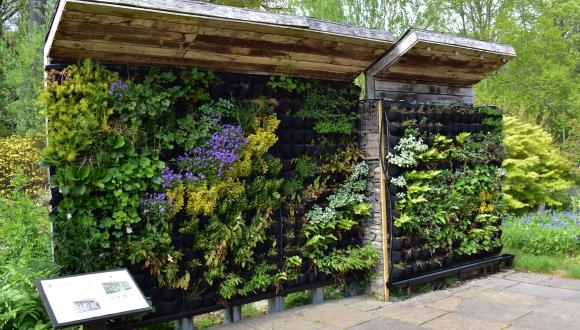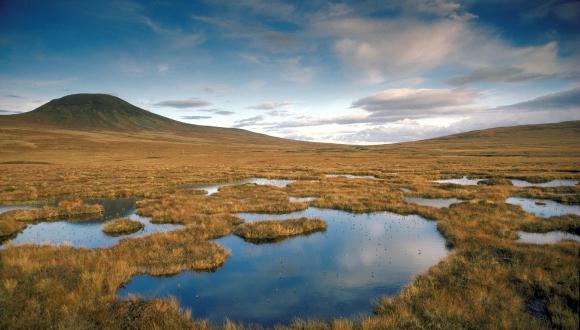
Soil carbon management
Scotland’s soils hold more than 3,000 megatonnes of carbon, around 60% of which is held in deep peat soils.
NatureScot is helping to protect and conserve Scotland’s important soils to reduce the impacts of climate change.
Our soil carbon store has built up over thousands of years. But this resource is increasingly at risk from change through the:
- dynamics of natural processes
- direct impacts of land use change
- other anthropogenic impacts that can degrade soil and result in the rapid loss of carbon
This resource takes such a long time to form and such a short time to lose that protecting the existing soil carbon store is our first priority.
No single agency has an overall lead role on soil carbon management issues. But NatureScot can support activities that closely relate to our own remit.
We set out our strategy in 2010 for protecting and conserving Scotland’s important soils to reduce the impacts of climate change through carbon loss. Our activities focus on the four priority areas below.
View the strategy as it was originally set out in full in NatureScot Board paper /10/1/2 - soil carbon.
Designated areas
‘Healthy’ functional soils, capable of delivering a full range of ecosystem services, are needed to support species and habitat condition and diversity.
NatureScot activities include:
- raising awareness among NatureScot and our customers about the carbon stored in protected areas and how this helps to mitigate climate change
- involvement in research activities that inform management decisions about carbon sequestration and reducing emissions from soils
- reviewing how we manage our National Nature Reserves in terms of climate change responses and managing soils alongside biodiversity
Peatland management
Peatlands contain the highest stock of soil carbon in their peat deposits. Peat in Scotland’s wetlands is also a major carbon store.
NatureScot activities include:
- developing advice on peatland and wetland habitat management to take account of their carbon storage as well as biodiversity value
- developing advice on Scottish Rural Development Programme incentives for peatland management
- advising planning authorities, which must consult us in relation to the industrial extraction of peat, e.g. for fuel, malting and garden products
- managing the Peatland Action programme to restore and manage peatlands to maintain carbon stores and encourage carbon sequestration
- building peatland restoration capacity and understanding among land managers, contractors, advisors and the public
Woodland management
Woodlands have the capacity to store atmospheric carbon in their timber and leaf litter, and either raise or lower soil carbon levels. We work closely with Forestry Commission Scotland on this priority area.
NatureScot activities include:
- ensuring that updates to our guidance fully reflect the balance between carbon storage and other objectives relating to the natural heritage
- developing advice on the potential site restoration and reseeding strategies of woodland and plantations shortly due for felling
- engaging on the need to balance biodiversity/soil carbon/woodland interests with woodland expansion, via Scotland’s Land Use Strategy
- working with others to develop an agreed model of carbon fluxes in relation to afforestation (including native woodland) on peaty soils
Renewable energy and land use change
Positive land management practices can help to mitigate the effects of climate change. These can be encouraged via Scottish Rural Development Programme incentives.
We work with planners and developers to help deliver good development in the right places, and so protect soil carbon resources.
We also work with land managers and the public to ensure the sustainable management of Scotland’s land and soils. This will protect soils’ ability to deliver a wide range of environmental and ecological services.
We collaborate with the Scottish Environment Protection Agency (SEPA) on this priority area.
NatureScot activities include:
- working with industry and SEPA to develop and promote tools to assess carbon impacts of development, e.g. to reduce waste of soil and soil carbon
- working with industry and SEPA to produce good practice guidance, e.g. on minimising soil disturbance during wind farm construction
- providing advice on the use of peat and other soils in the restoration of renewable energy development sites
- producing guidance and advice on the sustainable use of soils for the protection of habitats, species and landscape
- continuing to engage with the Scottish Government on soil carbon as a key principle of sustainable land use, within an ecosystem approach





